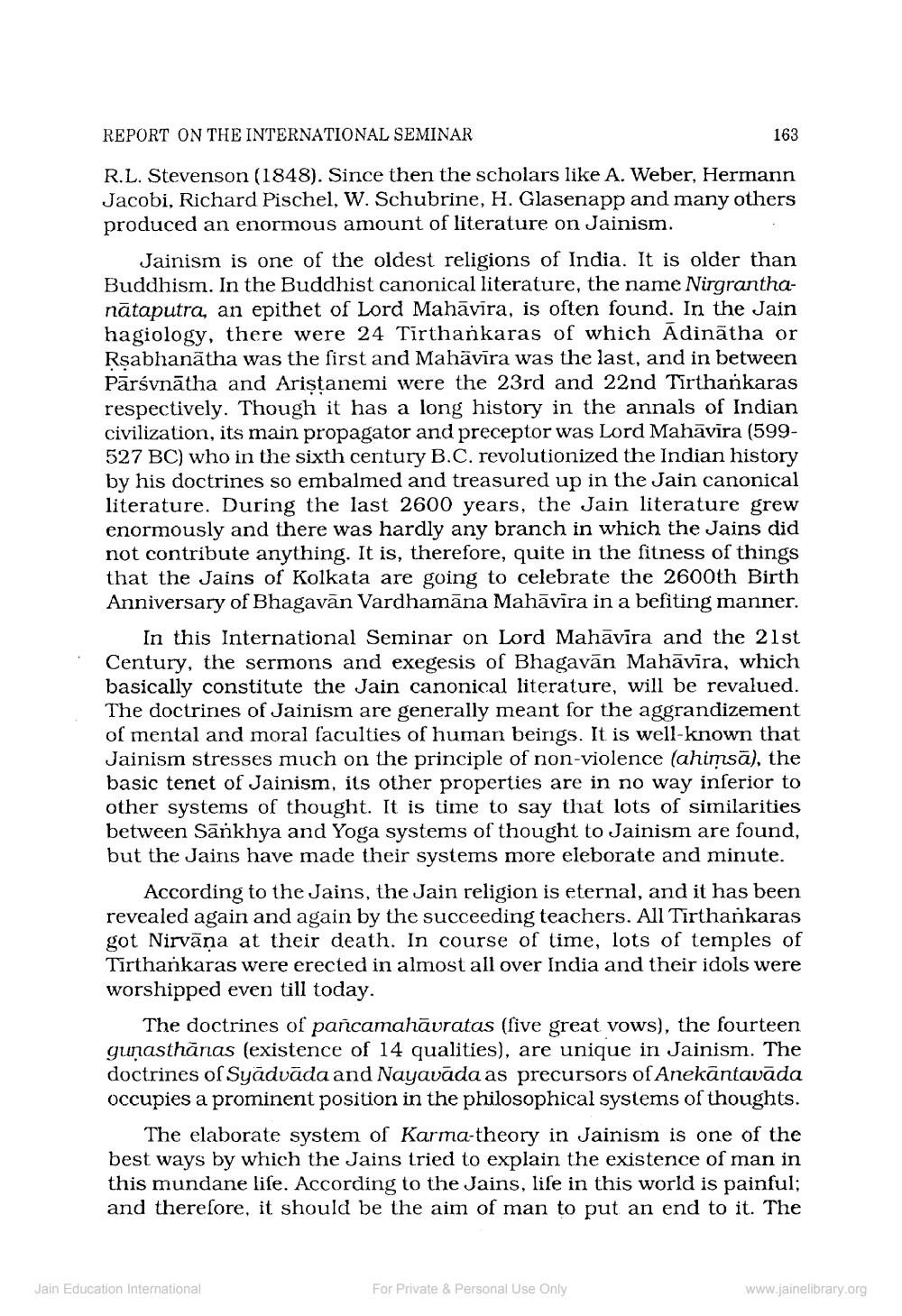________________
REPORT ON THE INTERNATIONAL SEMINAR
163
R.L. Stevenson (1848). Since then the scholars like A. Weber, Hermann Jacobi, Richard Pischel, W. Schubrine, H. Glasenapp and many others produced an enormous amount of literature on Jainism.
Jainism is one of the oldest religions of India. It is older than Buddhism. In the Buddhist canonical literature, the name Nirgranthanātaputra, an epithet of Lord Mahavira, is often found. In the Jain hagiology, there were 24 Tirthankaras of which Adinatha or Rsabhanātha was the first and Mahāvīra was the last, and in between Pārsvnātha and Aristanemi were the 23rd and 22nd Tirthankaras respectively. Though it has a long history in the annals of Indian civilization, its main propagator and preceptor was Lord Mahāvīra (599527 BC) who in the sixth century B.C. revolutionized the Indian history by his doctrines so embalmed and treasured up in the Jain canonical literature. During the last 2600 years, the Jain literature grew enormously and there was hardly any branch in which the Jains did not contribute anything. It is, therefore, quite in the fitness of things that the Jains of Kolkata are going to celebrate the 2600th Birth Anniversary of Bhagavan Vardhamana Mahāvira in a befiting manner.
In this International Seminar on Lord Mahāvīra and the 21st Century, the sermons and exegesis of Bhagavān Mahāvīra, which basically constitute the Jain canonical literature, will be revalued. The doctrines of Jainism are generally meant for the aggrandizement of mental and moral faculties of human beings. It is well-known that Jainism stresses much on the principle of non-violence (ahimsā), the basic tenet of Jainism, its other properties are in no way inferior to other systems of thought. It is time to say that lots of similarities between Sankhya and Yoga systems of thought to Jainism are found, but the Jains have made their systems more eleborate and minute.
According to the Jains, the Jain religion is eternal, and it has been revealed again and again by the succeeding teachers. All Tirthankaras got Nirvana at their death. In course of time, lots of temples of Tirthankaras were erected in almost all over India and their idols were worshipped even till today.
The doctrines of pañcamahāuratas (five great vows), the fourteen gunasthānas (existence of 14 qualities), are unique in Jainism. The doctrines of Syādvāda and Nayavāda as precursors of Anekantavāda occupies a prominent position in the philosophical systems of thoughts.
The elaborate system of Karma-theory in Jainism is one of the best ways by which the Jains tried to explain the existence of man in this mundane lise. According to the Jains, life in this world is painful; and therefore, it should be the aim of man to put an end to it. The
Jain Education International
For Private & Personal Use Only
www.jainelibrary.org




